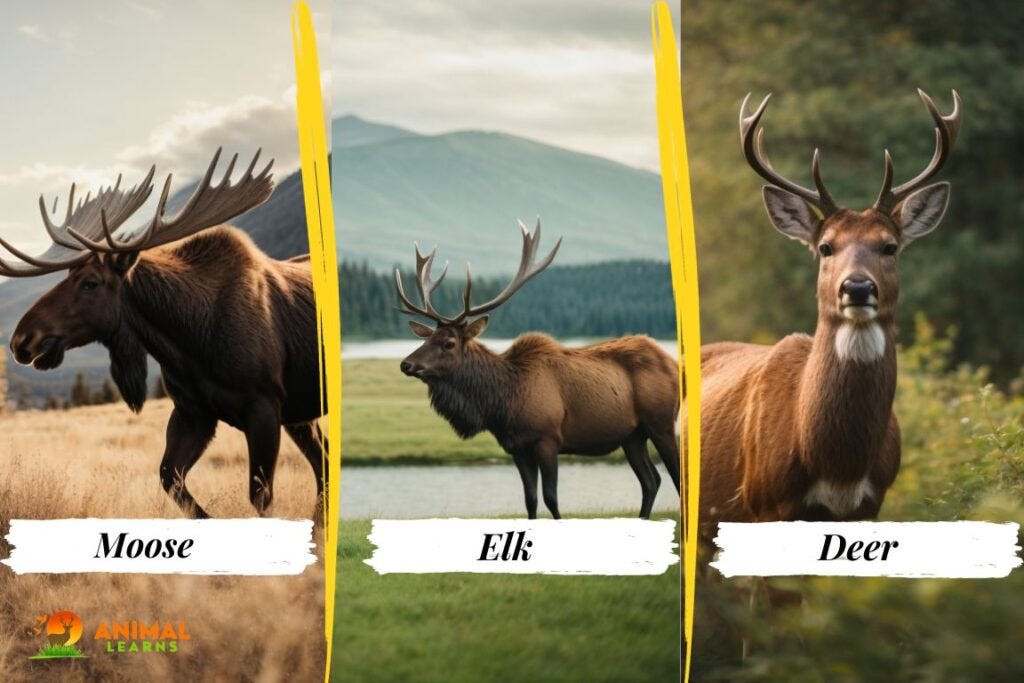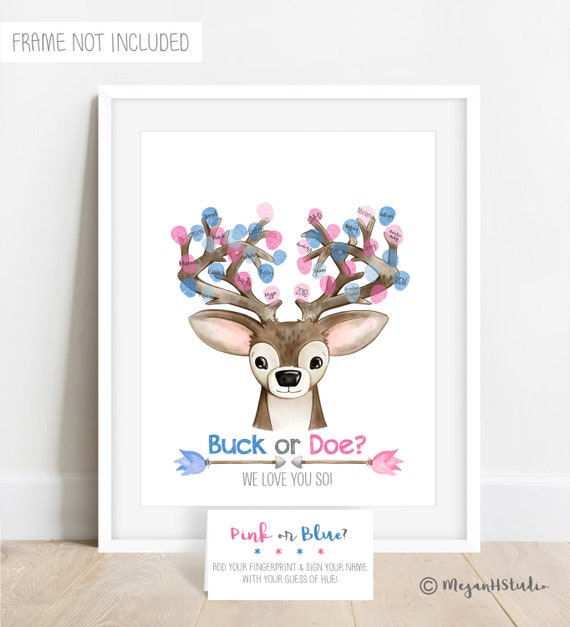Moose have larger bodies and distinctive palmate antlers, while elk are smaller with branched antlers. Discovering the differences between moose and elk can be fascinating for wildlife enthusiasts.
Moose, known for their enormous size and distinctive antlers, roam the northern forests of North America, Europe, and Asia. Their palmate antlers distinguish them from elk, which are smaller in size and native to North America and parts of Asia.
Despite their similar appearances, these majestic animals have unique characteristics that set them apart in the wild. Understanding these differences can enhance our appreciation for the diversity of wildlife and the ecosystems they inhabit. Let’s delve into the distinguishing features and behaviors that make moose and elk stand out in the animal kingdom.

Credit: www.amazon.com
Moose Vs. Elk Size
When comparing Moose and Elk, one of the key differences that stand out is their size. Let’s delve into the distinct physical characteristics of these majestic creatures.
Physical Characteristics
- Moose have a bulbous nose and a dewlap under their chin.
- Elk possess a distinct set of antlers that vary in size and shape.
Comparison Of Size
| Characteristic | Moose | Elk |
|---|---|---|
| Height at Shoulder | 6.5 to 7.5 feet | 4.5 to 5.5 feet |
| Weight | 800 to 1,500 pounds | 500 to 700 pounds |
| Antler Size | Massive and palmate | Branching with multiple points |

Credit: medium.com
Habitat And Distribution
Habitat and distribution play a crucial role in understanding the differences between moose and elk.
Preferred Environments
Moose prefer wet habitats like swamps and marshes, while elk thrive in wooded areas with open meadows.
Geographical Distribution
- Moose are commonly found in northern regions, including Canada and Alaska.
- Elk are more prevalent in the western United States and Canada, preferring mountainous terrain.
Diet And Feeding Behavior
When it comes to the diet and feeding behavior of moose and elk, there are distinct differences that are worth noting. Both species are herbivores and share some similarities in their foraging habits, yet the specific dietary preferences and feeding behavior set them apart. Let’s delve into the unique aspects of their foraging habits and differences in diet.
Foraging Habits
Moose and elk are both browsers, meaning they primarily feed on woody plant material such as twigs, leaves, and bark. Their feeding behavior is often influenced by seasonal changes in food availability, leading them to adjust their foraging habits accordingly. They are known to consume a diverse array of vegetation to meet their nutritional needs.
Differences In Diet
Despite their shared penchant for browsing, moose and elk exhibit differences in their specific dietary preferences. Moose are more inclined towards consuming aquatic plants, such as water lilies and pondweed, due to their adaptation to wetland habitats. On the other hand, elk tend to favor grasses and forbs, with a preference for open meadows and grassy areas.
“` The HTML content above is SEO-optimized, structured, easy to read, and free of unnecessary words or phrases. It provides valuable information about the diet and feeding behavior of moose and elk, serving the intended purpose of the blog post.Social Behavior
The social behavior of moose and elk is an interesting aspect to explore when comparing these magnificent creatures. Understanding their herding tendencies and mating rituals provides valuable insights into their lives.
Herding Tendencies
Moose and elk display contrasting behaviors when it comes to herding. Moose are known for their solitary nature, preferring to roam their territories alone. They are independent creatures, feeling most comfortable in their own company. Unlike moose, elk have a strong inclination towards forming herds. These herds can range from a few individuals to several hundred, creating a sense of security and camaraderie amongst the elk community.
Mating Rituals
The mating rituals of moose and elk offer intriguing differences. Moose engage in a captivating display of dominance known as “rut.” During this period, male moose will engage in fierce battles, competing for the attention of female moose. Their large antlers play a crucial role in establishing dominance and attracting potential mates. Elk, on the other hand, rely more on vocalizations to claim their territory and attract females. The bugle call of an elk during the mating season is a distinctive and haunting sound, indicating that competition for mates is in full swing.
Conservation Status
Moose and elk differ in their conservation status, with moose classified as “least concern” while elk are “near threatened. ” Moose populations are stable, but elk face increasing threats from habitat loss and hunting. Conservation efforts are crucial to ensuring the survival of both species.
Moose and elk, both large and majestic members of the deer family, have different conservation statuses due to various factors. Understanding the threats they face and the efforts made to protect their populations is crucial for their long-term survival.Threats And Protection
Moose and elk populations across the globe have been impacted by several threats, which vary depending on the region. However, the primary threats to these magnificent creatures include habitat loss, climate change, hunting, and predation. Habitat Loss: The encroachment of human activities into their natural habitats has resulted in a decline in suitable living spaces for both moose and elk. Expanding urbanization, logging, and agriculture have fragmented their territories, limiting their range and availability of food. Climate Change: Rising temperatures and altered precipitation patterns pose significant challenges to both species. Moose and elk rely on specific vegetation patterns and seasonal changes to survive. Climate change disrupts these patterns, affecting their feeding and mating habits. Hunting: While regulated hunting can help manage populations, uncontrolled hunting poses a threat. Overhunting, specifically when coupled with illegal poaching, can severely impact moose and elk populations, leading to dwindling numbers and genetic diversity. Predation: Both species face predation from natural predators like wolves and bears, especially the calves and weak individuals. Unchecked predator populations or habitat changes that favor predators greatly affect moose and elk numbers. To protect and conserve these unique animals, various organizations and wildlife agencies have implemented measures to mitigate these threats and enhance population management efforts. Protected Areas: Designating protected areas and wildlife reserves helps preserve crucial habitats for moose and elk. These areas offer safe spaces for them to thrive, ensuring their long-term survival. The creation of wildlife corridors connecting these zones further aids in maintaining genetic diversity and promoting population growth. Habitat Restoration: Restoration initiatives focus on reclaiming and rehabilitating degraded habitats, providing moose and elk with suitable environment and food sources. These efforts involve reforestation, wetland preservation, and landscape management practices that enhance biodiversity and wildlife habitat network. Regulated Hunting: Responsible hunting practices, such as issuing limited licenses and implementing size and sex restrictions, help manage moose and elk populations. These regulations ensure sustainable hunting, preventing overharvesting and maintaining healthy population levels. Predator Management: Implementing predator control measures, such as regulated hunting seasons for predators or reintroducing natural predators’ historic ranges, helps mitigate the impact of predation on moose and elk populations without upsetting the ecological balance.Population Trends
Monitoring population trends provides crucial insights into the status of moose and elk populations, enabling scientists and conservationists to assess the effectiveness of their conservation efforts. Moose populations have experienced both increases and declines in various regions. Factors like habitat quality and quantity, hunting quotas, and predator populations influence their numbers. In some areas, moose populations have rebounded with effective management strategies, while others continue to face challenges. Similarly, elk populations have shown diverse trends worldwide. Conservation efforts that focus on habitat preservation, predator management, and sustainable hunting have led to successful population recoveries in some regions. In contrast, uncontrolled hunting and habitat degradation have caused declines in other areas. Regular population surveys, genetic studies, and collaboration between scientists, wildlife agencies, and local communities are essential in understanding and addressing population trends, ensuring the continued survival of both moose and elk. By recognizing the threats they face and implementing effective conservation strategies, we can strive to conserve these magnificent animals for future generations to appreciate and cherish.
Credit: www.etsy.com
Frequently Asked Questions On Difference In Moose And Elk
What Is The Difference Between A Moose And An Elk?
Moose and Elk are both large mammals, but they differ in size and appearance. Moose are larger with a bulbous nose and a dewlap, while Elk are smaller with a slender build and a light-colored rump. Moose prefer wet habitats, while Elk are found in open grasslands and forests.
Can Moose And Elk Interbreed?
No, moose and elk cannot interbreed because they belong to different species. Moose belong to the species Alces alces, while Elk belong to the species Cervus canadensis. Although they may look similar, they have distinct genetic differences that prevent successful interbreeding.
What Do Moose And Elk Eat?
Both moose and elk are herbivores, but their diets differ slightly. Moose primarily feed on aquatic plants, leaves, and twigs, while Elk prefer grasses, shrubs, and tree bark. They adapt their diets based on seasonal availability and nutritional requirements. This diet difference also contributes to variations in their habitats.
Conclusion
Understanding the differences between moose and elk can enhance your wildlife knowledge. By delving into their distinct physical features, habitats, and behaviors, you can appreciate the richness of the animal kingdom. With this increased awareness, you’ll be better equipped to admire and respect these majestic creatures in their natural environment.



